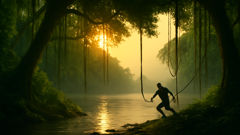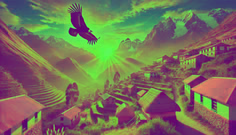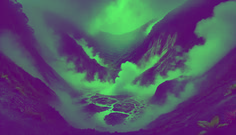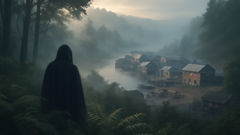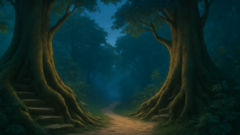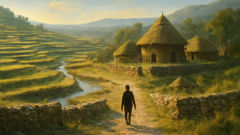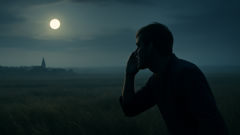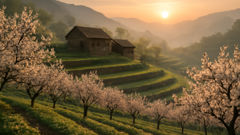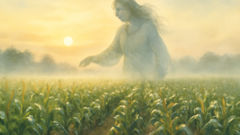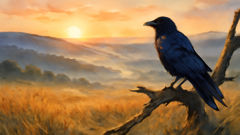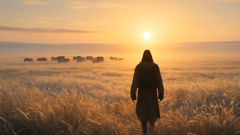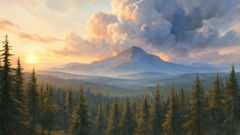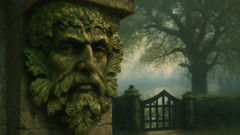Introduction
On the edge of Pará and Amazonas, where the river braids itself into a living thread, legends begin not with thunder but with the soft tread of village feet, the scent of sap and rain, and the memory held by seeds that know more than scholars dare to admit. I arrived in a settlement where the elder’s face bore the map of the forest, where the stories about the Mapinguari—guardian of the rainforest and guardian of memory—circulated like the current. The creature stood as a paradox: terrifying to those who forget the forest’s truth, but patient with those who listen. My notebook filled with jaguar tracks and the chorus of parrots, yet every line carried a single stubborn question about balance: how does one exist in a world poised between development and decay without surrendering the green world to erosion? The rainforest, with its breath of resin, fruit, and rain, spoke not through words but through presence. As I followed a seasoned guide deeper into the green labyrinth, the air grew thick with heat and fragrance, the canopy pressing down with a cathedral-like weight. Sheltering vines hung as if to veil an altar; roots rose like stairways, leading nowhere and everywhere at once. Then the Mapsinguari appeared, not as a roar but as a tremor at the edge of sight, a figure whose weight settled into the soil with the gravity of a storm. It moved with purpose, a being born of thunder, its eye enormous and unblinking, reflecting the canopy as if the forest itself were a living eye. It did not threaten so much as testify to a lineage: listen, preserve, endure. And in that hour I learned that legends are not tricks to frighten children but protocols for survival, a living map drawn in breath and shadow. The rain began to fall in sheets, and the world felt almost sacred: every leaf and vine would testify if asked. The elder spoke softly of a pact—humans, tree, and creature must remember debts owed to soil and seed, must keep promises that sustain life. The Mapinguari’s eye became the measure of those promises, a witness that keeps watch not to punish but to remind. This chronicle began with fear and ended with fidelity, with a map that leads not to treasure but to responsibility. It matters now, in a time when progress glitters through steel and screen while the real wealth lingers in roots and rain, in the patient, repeating breath of living green. The legend insists that guardianship is not aggression but stewardship, that the true terror in the forest arises when memory falters and the forest forgets its own stories.
Whispers Along the River
The journey began with a ferry through a braided river, where the river itself seemed to carry stories in its current, a string of villages clinging to muddy banks like beads on a necklace. Our guide, a man named Aruá with eyes the color of rain, moved with a confidence born of years listening to the forest’s slow speech. He spoke in the cadence of someone who had learned to hear not just the words spoken by elders, but the silences between breaths of leaves. We trailed a path that vanished and reappeared, a living thread that the Amazon spun to test us, to separate the curious from the faithful. The night before, the village had poured a second cup of coffee into a heavy clay mug and offered me a carved spoon, as if tempting me to eat truth from a wooden bowl. I accepted, knowing that nourishment would require listening long, listening through fear. The river’s murmur rose and fell like a breathing animal, a reminder that the forest is a person with memory and opinion. We waded through shallows where electric-blue dragonflies skimmed the surface, and we watched as the forest rearranged itself around the idea of us. Then silence fell, a quiet that felt almost ceremonial, and in that silence the forest pressed closer until a pair of glowing eyes—no human eyes—appeared in the brush, then vanished just as quickly as a breath. It was the Mapinguari, but not a monster, rather a patient sentinel whose presence pressed upon the heart with a mix of awe and caution. We moved on, aware that a survey of plants and animals would be nothing without listening to the forest’s memory. Aruá spoke of trees that remember footprints for generations, of roots that carry the voices of those who came before, and of a guardian whose purpose is to tilt the balance toward life rather than fear. The more we walked, the more the forest opened its story to us: the rain that nourishes the roots is the same rain that erodes the pathways of men who forget, the same rain that rewrites the map in the minds of those who listen. By the time the river widened into a quiet calm, a realization had settled in us: the Mapinguari demands humility before the knowledge of everything that grows, a demand that could only be satisfied by patience and restraint. The first section ends with a vow whispered to the trees—that we would learn to move without breaking what ties us to the earth, that we would tell the forest’s story with every breath we take.
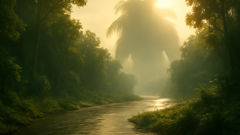
The Trial in the Canopy
The second chapter of the journey arrived with a trial that felt both physical and spiritual. We pushed deeper into the forest until the air thickened into a resinous scent that clung to hair and skin. The canopy above formed a living cathedral, its branches acting as arches, its leaves like pews where rain sang in soft undertones. The mapinguari appeared again, not as a single event but as an atmosphere: a presence that moved with the rhythm of the forest’s pulse, a silhouette that could be read only by those who chose to observe with steady nerves and an unclouded heart. Aruá’s gait remained unshaken, yet even he paused to listen to the whispering lichens on a fallen trunk, to watch a colony of leaf-cutter ants map a path through a broken limb as if drawing a new road for forest life. The guardian’s eye—one vast, unblinking orb—translated the forest’s ledger into a human test: do you see the truth of the forest, and will you defend it against those who would strip it away for a quick profit? The trials came in many forms: a creaking vine that threatened to drop us into a hidden pit, a chorus of frogs that swelled into a single rain-soaked note, the sudden scent of bloodroot that could numb a traveler’s senses if panic took hold. We learned to wait, to let the forest reveal what it wished, to accept that courage is not the absence of fear but the willingness to walk forward when fear has learned your name. At a sacred grove, the Mapinguari’s gaze settled on a pair of symbolic totems carved by ancestral hands. The totems bore marks that spoke of stewardship—care for water, soil, and seed; respect for life in all its forms; reverence for the micro-worlds that keep the macro-worlds alive. We were offered a choice: turn back and let the forest heal itself without our aid, or stay and contribute to a future where logging and mining would have to earn the forest’s consent, not demand it. We chose to stay, to learn, to listen, to vow that our work would be guided by the forest’s consent, not by the calendar of markets. The session closed with the mapinguari stepping aside to reveal a hidden spring where the water’s surface reflected the forest’s many faces—the face of a jaguar, the face of a child, the face of a grandmother who remembered the first forest. In that moment the guardian shared a truth that the old tales have long whispered: guardians do not merely confront danger; they illuminate paths that let life flourish. We left the grove with a new compass—an ethical map stitched from memory, patience, and humility—knowing that the forest would be watching when we returned to the village to tell how courage had found a way to walk with wisdom rather than march with conquest.
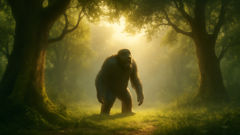
Conclusion
The forest does not yield its secret easily, and the Mapinguari does not grant triumph to those who seek it with loud voices or hurried feet. It tests you with silence first, then with presence, until you understand that you are not merely a visitor but a guest expected to honor a living agreement between soil, seed, and sky. In the days that followed, I returned to the village with a revised map: not a map of territory but a map of responsibilities. The elders spoke of a century-long patience, of keeping guard against the greed that poisons rivers and scars the land. The Mapinguari’s eye, once a figure of dread, had become a symbol of memory—memory of how every plant sustains a patient chain that feeds every creature, memory of how every choice leaves an imprint on the forest’s future. The legend, once kept in whispered evenings by the fire, moved into the light of shared action: local communities, scientists, and travelers understanding that the rainforest’s vitality depends on listening to what the forest asks for—time, protection, and respect. The Mapinguari remains, in a sense, as long as there are humans who remember to walk softly, to tread with reverence, and to speak with care about a world where a single eye can see the whole. My own story has become a pledge—a personal oath to protect the Amazon’s breath and to tell the tale not as a frightful myth but as a living code for how to live with the land. And if the forest is to survive a century of change, the guardian’s gaze will remain an anchor, a reminder that courage needs a conscience, and that legends are not merely legends but instruments for stewardship.

